Monday, July 27, 2020
Pompeii's most recent finds reveal new clues to city's destruction
Since its discovery several centuries ago, few archaeological sites have fascinated the world as has the ancient Roman city of Pompeii. After the first major excavations in more than 50 years, Pompeii is revealing a surprising abundance of buried treasures. The new finds are coming from intensive work in a small sector known as Region V that has nevertheless yielded giant insights into the final days of the doomed city.
Along with the complete excavation of two houses—the House of the Garden and the House of Orion—the dig has yielded frescoes, murals, and mosaics of mythological figures in gorgeous colors, skeletons with stories still to be unraveled, coins, amulets, and show horses in the stable of a wealthy landowner.
The new finds are also sparking debate about Pompeii’s tragic story. Just before Vesuvius erupted in A.D. 79 and buried the city under a mantle of ash and rock, a local worker scrawled an inscription on a wall. Along with a joke (roughly translated as “he ate too much”), he wrote the date: October 17. The discovery of this inscription may confirm the view that the eruption took place in October, and not August, as some scholars maintain.
Read the rest of this article...
3,000-year-old house remains unearthed in Belgium
Credit: Aron Archaeological Research Agency
Sebastiaan Augustin of Aron, the organisation that is carrying out the archaeological project: “We encountered the floorplan of a house dating from the Iron Age. We can date it to between 770 and 430 before the Common Era. That’s before the Romans got here.
A little further to the east we found a ring of a ditch with pieces of charcoal. It dates from between 1,600 and 1,500 before the Common Era. That’s the middle of the Bronze Age. That’s quite a bit older than the house and may form part of a grave monument.”
“It’s always nice when we find things like this. It doesn’t really surprise us. The Haspengouw area has always been very suitable for farming. It is nice to see that even before the Romans villas like these can be found in our area."
Read the rest of this article...
Norway's Gjellestad burial mound belonged to the Iron Age elite
The soil samples were taken from the mound construction, in the presumed subsoil
and in the trench for the ship burial [Credit: NIKU]
Recent geoarchaeological and geophysical analysis show that the construction of the Gjellestad ship mound was carefully planned and executed.
Five soil samples from the burial mound have been analyzed by researchers from the Norwegian Institute for Cultural Heritage Research (NIKU) and the University of Oslo. These were taken during excavations done by the Museum of Cultural History during autumn of 2019.
One of these samples was taken from the ship grave itself, from within the layer of soil inside the ship. The other samples were taken from the remnants of the mound that surrounded the ship.
The purpose of the analyses was to determine if these were able to reveal anything about what is visible in the 2018 dataset from the ground-penetrating radar (GPR) examinations, and if this could provide more information about how the mound was constructed.
Read the rest of this article...
Christian, Muslim symbols found in 7th century shipwreck in Israel
Students Maayan Cohen and Michelle Creisher examine the pottery near the bulkhead at Ma‘agan Mikhael B shipwreck.
(photo credit: A. YURMAN/LEON RECANATI INSTITUTE FOR MARITIME STUDIES OF THE UNIVERSITY OF HAIFA.)
But its plentiful cargo included 103 amphorae filled with all forms of agricultural products, numerous daily objects used by the crew and many other unique features, such as several Greek and Arabic inscriptions. They were swallowed by the sea and the sand, which preserved their secrets for centuries.
First spotted by two members of nearby Kibbutz Ma’agan Michael, about 35 km. south of Haifa, the site was again covered by sand and rediscovered in 2015.
The shipwreck has been excavated by the University of Haifa’s Leon Recanati Institute for Maritime Studies since 2016. It has offered archaeologists unique insights into the life of the region at the time of the transition between Byzantine and Islamic rule, trade routes and ship construction.
Read the rest of this article...
Sunday, July 26, 2020
Archaelogical dig starts at Exeter Cathedral
An archaeological dig which has just started at Exeter Cathedral could uncover artefacts as far back as the Romans.
The first stone has been lifted in a six-week investigative dig where a new cloister gallery will ultimately be built.
Archaeologists want to find out what is below the paving slabs and grass which covers the area just outside the cathedral's chapter house, which has never been examined before.
The dig is expected to provide crucial information about the layout of the medieval cloister - which was torn down in 1657 - and the state of its foundations which, if still serviceable, will be reused for the new building.
Read the rest of this article...
Vikings had smallpox and may have helped spread the world's deadliest virus
A 1200-year-old smallpox-infected Viking skeleton found in Oland, Sweden
[Credit: The Swedish National Heritage Board]
Scientists have discovered extinct strains of smallpox in the teeth of Viking skeletons - proving for the first time that the killer disease plagued humanity for at least 1400 years.
Smallpox spread from person to person via infectious droplets, killed around a third of sufferers and left another third permanently scarred or blind. Around 300 million people died from it in the 20th century alone before it was officially eradicated in 1980 through a global vaccination effort - the first human disease to be wiped out.
Now an international team of scientists have sequenced the genomes of newly discovered strains of the virus after it was extracted from the teeth of Viking skeletons from sites across northern Europe.
Professor Eske Willerslev, of St John's College, University of Cambridge, and director of The Lundbeck Foundation GeoGenetics Centre, University of Copenhagen, led the study.
Read the rest of this article...
1,000-year-old Christian jewellery mould found in Switzerland
Stone jewellery mould for crucifix, cross medallion [Credit: Archaeological Service of Grisons]
An archaeological dig beside a former prison in the southeast Swiss canton of Graubünden has unearthed a 1,000-year-old double sided mould that was used to forge Christian-themed jewellery.
The concrete mould, which measures 9 x 8.5 x 3 centimetres, would have been used to forge up to seven different types of objects including earrings and a crucifix.
Experts from Graubünden’s archaeological services said that they reckoned the object dated from sometime between the 9th and 11th centuries.
The find is a rare one not only in canton Graubünden, but across the whole of Switzerland; such objects had previously been found only in Bern, Basel, and Winterthur.
Archaeologists have been digging since March in the area in and around the recently shut down Sennhof prison, and have come across what they describe as a small artisanal district dating from the Middle Ages.
Read the rest of this article...
Roman jars found in Spanish seafood shop
Authorities conducting a routine inspection of a frozen seafood shop in Spain were surprised to find ancient artefacts decorating the premises.
The owner's son found the objects while fishing, according to local media.
Thirteen jars (amphoras) are believed to date back to the 1st Century AD, while an 18th Century anchor and a limestone plaque were also found.
Both the owner of the business in Alicante and his son are now being investigated.
"The amphoras could come from the looting of shipwrecks," which would be protected as objects of underwater archaeology, a statement by the Civil Guard said on Wednesday.
The artefacts were moved to the Museum of the Sea in Santa Pola, where they underwent preliminary dating.
Read the rest of this article...
UN NOUVEL ÉTABLISSEMENT ANTIQUE DÉCOUVERT DANS LA PLAINE D'ALÉRIA (HAUTE-CORSE)
A Pietroso, dans la plaine d’Aléria au pied du Massif du Monte Incudine, les archéologues de l'Inrap ont mis au jour un vaste établissement rural de l'époque romaine, composé d'un étonnant ensemble de structures hydrauliques.
Une équipe d’archéologues de l’Inrap met actuellement au jour un établissement rural du IIIe siècle de notre ère, sur la commune de Pietroso, au pied du Massif du Monte Incudine à l’extrême ouest de la plaine d’Aleria. Sur prescription de l’État (DRAC de Corse), cette fouille, préalable à la construction d’un habitat résidentiel, est prise en charge à 100% par l’État, par le biais du fonds national pour l’archéologie préventive (Fnap). Elle apporte aujourd’hui d’intéressantes informations sur l’occupation antique en Corse.
Read the rest of this article...
Well-preserved mammoth skeleton found in Siberian lake
Russian scientists are working to retrieve the well-preserved skeleton of a woolly mammoth, which has some ligaments still attached to it, from a lake in northern Siberia.
Fragments of the skeleton were found by local reindeer herders in the shallows of Pechevalavato Lake on the Yamalo-Nenets region a few days ago. They found part of the animal’s skull, the lower jaw, several ribs, and a foot fragment with sinews still intact.
Woolly mammoths are thought to have died out around 10,000 years ago, although scientists think small groups of them may have lived on longer in Alaska and on Russia’s Wrangel Island off the Siberian coast.
Russian television stations on Friday showed scientists looking for fragments of the skeleton in the lakeside silt.
Scientists have retrieved more bones and also located more massive fragments protruding from the silt. They said it would take significant time and special equipment to recover the rest of the skeleton — if it had all survived in position.
Read the rest of this article...
Friday, July 24, 2020
Subterranean Scans Reveal New Mysteries at an Ancient Irish ‘Fort’
The hilltop remains of Navan Fort, an Iron Age site that a new paper argues has a broader history than previously thought.
O'DRISCOLL ET AL. 2020 / OXFORD JOURNAL OF ARCHAEOLOGY
O'DRISCOLL ET AL. 2020 / OXFORD JOURNAL OF ARCHAEOLOGY
Navan Fort is perched on an Irish hilltop, but some of its history hides beneath the soil.
ON A COLD AND WET day in March 2018, a van crammed with equipment and Scottish and Irish archaeologists rolled up alongside Navan Fort, a prominent hilltop settlement in Northern Ireland that’s not far from the modern border with Ireland. A ringed enclosure that sits on a tall hill in the countryside, Navan Fort is easy to pick out. It was one of the ceremonial centers of pre-Gaelic Ireland, and even has a visitor’s center today. But that March, the archaeologists were seeking remains that didn’t meet the eye.
Lo and behold, they found some. According to their recent study, published in the open-access Oxford Journal of Archaeology, the physical footprint and outsized role of Navan Fort may have been even larger and more lasting than previously thought. Using a combination of non-invasive archaeological surveys—one that measured the magnetic properties of the soil, and another that measures how the dirt conducts electricity—the team found the remnants of subterranean structures, suggesting that the site was occupied earlier than previously believed. They also found evidence of habitation much later than previously thought, clear through to the arrival of St. Patrick in the area, and the patron saint’s founding of the local ecclesiastical see.
Read the rest of this article...
Researchers find earliest confirmed case of smallpox
Massacred 10th century Vikings are seen having been found in a mass grave, at St John’s College, Oxford Photograph: Thames Valley Archaeological Services/PA
The Vikings are known for their intrepid seafaring, fearsome fighting and extensive trading, but it seems it may not only have been goods and weapons they carried on their travels – they could also have carried a deadly disease.
Researchers say they have found the world’s earliest confirmed case of smallpox, revealing the disease was widespread across northern Europe during the Viking age.
“I think it is fair to assume the Vikings have been the superspreaders,” said Eske Willerslev, professor of ecology and evolution at the University of Cambridge and director of the Lundbeck Foundation GeoGenetics Centre at the University of Copenhagen, who led the research.
Smallpox, a deadly infectious disease with symptoms including pus-filled blisters, is caused by the variola virus. Once described by the 18th-century English physician Edward Jenner as the “most dreadful scourge of the human species”, in the 20th century alone the disease is thought to have killed between 300 million and 500 million people.
Read the rest of this article...
Vikings spread smallpox around Europe in the 7th Century
Extinct strains of smallpox have been found in the teeth of Viking skeletons, indicating the disease was widespread in northern Europe during the 7th Century, scientists say.
An international team of researchers analysed the genetic material of the ancient strains and found their structure to differ from the modern smallpox virus which was eradicated in the 20th Century. They say the findings, published in the journal Science, pushes the date of the confirmed existence of smallpox back by 1,000 years.
The researchers believe Vikings may have helped spread the disease, although it is unclear whether these ancient strains were fatal. They say knowing more about the evolutionary history of viruses, such as the deadly smallpox, could help in the battle against new and emerging infectious diseases.
Read the rest of this article...
Read the rest of this article...
Viking brooch is first of its kind for Manx National Heritage
The oval brooch in its as-found state. Courtesy Manx National Heritage
A Viking brooch is a rare find of a high status woman and a first for the Isle of Man collections say experts
A collection of rare Viking Age finds including two rare and highly decorated oval brooches have been declared treasure on the Isle of Man.
First discovered in December 2018 by metal detectorists John Crowe and Craig Evans, the two brooches are made from bronze with silver wire decoration and most likely gilded, dating to around AD 900-950.
Experts believe the brooches would have been worn by a woman of some status.
Read the rest of this article...
Viking brooch is first of its kind for Manx National Heritage
The oval brooch in its as-found state. Courtesy Manx National Heritage
A Viking brooch is a rare find of a high status woman and a first for the Isle of Man collections say experts
A collection of rare Viking Age finds including two rare and highly decorated oval brooches have been declared treasure on the Isle of Man.
First discovered in December 2018 by metal detectorists John Crowe and Craig Evans, the two brooches are made from bronze with silver wire decoration and most likely gilded, dating to around AD 900-950.
Experts believe the brooches would have been worn by a woman of some status.
Read the rest of this article...
Read the rest of this article...
Wednesday, July 22, 2020
New light cast on Scotland's Bronze Age mountain dwellers on Arran
Radiocarbon dating of a piece of burnt wood found at the site in Glen Rosa has concluded that the house was occupied around 1,400BC. Picture: Frame Creates
Radiocarbon dating of a piece of burnt wood found at the site in Glen Rosa has concluded that the house was occupied around 1,400BC in what has been described as an “exciting” discovery by National Trust for Scotland, which led the dig at the site.
The roundhouse, which was built in Coire a’ Bhradain, which sits some 384 metres above sea level and is the highest known Iron Age site on the island.
It is now believed the roundhouse, which measured around six-metres wide, was used as temporary shelter during deer hunting trips through ‘the Bowman’s Pass’ at the top of the coire.
Read the rest of this article...
Scientists find new evidence of massive tsunami that devastated ancient Britain in 6200BC
The North Sea, Storegga underwater landslide event run-out, associated deposit locations
and core ELF001A [Credit: Gaffney et al. 2020]
Evidence of the catastrophic event has already been found in onshore sediments in Western Scandinavia, the Faroe Isles, northeast Britain, Denmark and Greenland but now for the first time confirmation of the event has been found on the UK’s southern coasts.
The giant tsunami, known as the Storegga Slide, was caused when an area of seabed the size of Scotland (measuring some 80,000sq km and around 3,200 cubic km) shifted suddenly.
This triggered huge waves that would have brought devastation to an inhabited ancient land bridge, which once existed between the UK and mainland Europe - an area known as Doggerland - that is now submerged beneath the North Sea.
Read the rest of this article...
The clues to ancient humans hidden beneath the sea
Submerged in eleven metres of water sits a landscape that could contain tantalising clues to Britain’s earliest farmers. It’s also at serious threat from erosion by the sea - meaning a race against time to discover and preserve as much as possible.
Read the rest of this article...
Iron Age Butter Identified in Scotland
(Courtesy of The Scottish Crannog Centre)
According to a report in The Scotsman, researchers have recovered a 2,500-year-old wooden dish from Loch Tay, a freshwater lake in Scotland’s central highlands. Chisel marks are still visible on the dish, which is thought to have fallen into the water with one of the at least 17 crannogs, or Iron Age wooden houses that once stood on stilts at the site. “Because of the fantastic anaerobic conditions, where there is very little light, oxygen, or bacteria to break down anything organic, you get this type of sealed environment,” explained archaeologist Rich Hiden of the Scottish Crannog Centre.
Read the rest of this article...
Tuesday, July 21, 2020
Neolithic “Venus of Egerszeg” Unearthed in Hungary
ZALAEGERSZEG, HUNGARY—Hungary Today reports that researchers from the Göcsej Museum unearthed a fragment of a 6,500-year-old figurine at the site of a large Lengyel settlement at a construction site in western Hungary. Named the “Venus of Egerszeg,” the sculpted clay fragment depicts a woman’s torso. The researchers suggest that the figure was deliberately broken into small pieces as part of a fertility rite. Other ceramic fragments, some of which had been painted yellow, red, and white, and stone tools were also recovered. To read about a 23,000-year-old Gravettian Venus figurine recently found in France, go to "Artifact."
Read the rest of this article...
6500-Year-Old Statuette ‘Venus of Egerszeg’ Showcased
Archaeologists at the Göcsej Museum found fragments of a 6,500-year-old idol, an artistically detailed female clay statue from the Lengyel culture – an archaeological culture of the European Neolithic period, centered on the Middle Danube in Central Europe – during excavations related to the construction of the Zalaegerszeg Automotive Test Track. It has been named ‘Venus of Egerszeg’ and according to the museum, it will be the most impressive piece of the virtual exhibition presenting the prehistory of Zalaegerszeg and Zala county.
Read the rest of this article...
Neanderthal extinction in Western Mediterranean area not caused by climate change
Stalagmites are ecellent paleoclimatic and paleoenvironmental archives
[Credit: O. Lacarbonara]
"The Apulian area we are researching emerges as a 'climate niche' during the transition between Neanderthal and Modern Man," explains researcher Andrea Columbu, the first author of the study. "It is therefore unlikely that drastic changes in climate have led to the disappearance of Neanderthals in Apulia and, by extension, in similar Mediterranean climatic areas".
Read the rest of this article...
Hadrian's Wall warning after man arrested for theft
Newcastle University
Historic England has been working with police after a number of thefts near the Military Road, and 44-year-old man was arrested on suspicion of theft last week.
Don O'Meara from Historic England says people can do untold harm to unique and historic finds.
It's not that one coin or that one brooch, often to get that prestige item they can be digging holes all over protected monuments, they can be disturbing artefacts, throwing away artefacts that they think have no value, and that's the real lost material."
Dean O'Meara
Read the rest of this article...
Attard's 3000-year-old cart ruts covered to be 'preserved'
These ancient cart ruts have been buried under the new road being built in Attard despite appeals to incorporate them into the project, although they have been preserved for future study.
Photos: Daniel Cilia
Recently discovered cart ruts in Attard - proof that Mdina Road has been a popular thoroughfare for thousands of years - are being reburied out of sight under the Central Link Project.
Infrastructure Malta (IM) said that the cart ruts will not be damaged and will be “preserved for future studies”.
The cart ruts, in the Wied Inċita area, may date back to the prehistoric Bronze Age (2,500 to 750BC) and seem to have been used for several centuries, including in the classical era. They are the only known cart ruts in the area.
The Archaeological Society Malta and Din l-Art Ħelwa have strongly urged IM to redesign the road alignment, in close consultation with the Superintendence of Cultural Heritage, to allow the cart ruts to remain visible.
Read the rest of this article...
Archaeological complex Haithabu and Danewerk
This special World Heritage series presents the diversity of natural and cultural heritage from a bird's eye view: architectural highlights, varied cultural landscapes, parks and natural reserves. From Aachen Cathedral (a World Heritage since 1978) to the monastery island of Reichenau, from the Wadden Sea to Berlin's Museum Island, from Cologne Cathedral to the mining region in the Erzgebirge Ore Mountain region (a World Heritage since 2019) - the #DailyDrone has flown over all 46 German World Heritage sites.
Read the rest of this article...
Monday, July 20, 2020
Archaeologists discover evidence of Iron Age settlement at housing site in St Neots
Archaeology dig at Wintringham Park in St Neots reveals evidence of Iron Age
Evidence of the Iron Age, including 17 ancient roundhouses, has been discovered during an archaeology dig in St Neots.
As part of the site preparation work at the Wintringham Park site, on the eastern edge of St Neots, extensive archaeological investigations have been carried out.
Due to the nature of its work and the ability to social distance, Cambridge-based Oxford Archaeology East has been able to continue to work at Wintringham through the Coronavirus pandemic. It has opened up around 85 per cent (10.5hectares) of Phase One of the development and unearthed a vast array of discoveries, mostly from the Iron Age period.
The Iron Age marks a significant milestone in human history as the discovery of iron, and how to use it to create tools, transformed lives. The ability to make tools made farming easier than before and settlements started to grow in size. A standard Iron Age roundhouse would have been a circular building (usually 10-15m in diameter) with a conical thatched roof; the ultimate open plan living with life revolving around a central open-hearth fire used for warmth, light and cooking.
Read the rest of this article...
Unknown Viking trading place discovered by master’s student
Here, at Sandtorg by Tjelsund, Tor-Kjetil discovered a trading place that existed as early as the 800s. (Photo: Tor-Kjetil Krokmyrdal)
With the help of a metal detector, Tor-Kjetil discovered what appears to be the oldest trading place in Northern Norway to date. Now he’s switching jobs, making archeology a full-time engagement.
In his newly published archaeology master’s thesis delivered at UiT The Arctic University of Norway, Tor-Kjetil Krokmyrdal has shown that a trading place existed in the Viking Age at Sandtorg in Tjelsund, in Harstad Municipality.
Krokmyrdal found objects that can be dated all the way back to the 800s, which makes Sandtorg the first trading place we know of thus far in Northern Norway.
“This discovery means that from now on, researchers need to re-think how societies and trade functioned in this region in the Viking Age and the Early Middle Ages” archaeologist Marte Spangen says, who has been supervising Krokmyrdal in his thesis work.
Read the rest of this article...
New research shows climate was the key factor impacting the movement of the first farmers across Europe
The four major axes of expansion of the Neolithic migration, with key dates noted
[Credit: University of Roehampton]
The research team, including Dr. Lia Betti, Senior Lecturer of the University of Roehampton, assembled a large database of the first arrival dates of Neolithic farmers across the continent and studied the speed of their migration in relation to climatic reconstructions of the time. They also re-analysed ancient DNA data to understand the interaction between early farmers and local hunter-gatherers.
They discovered migration started quickly out of south-eastern Europe, with Neolithic farmers pushing out the existing hunter-gatherer population. This was demonstrated by how little the DNA of the two groups mixed. As they moved north, the climate became less suitable for the crops they had bought with them. Their pace of movement slowed, changing how they interacted with local hunter-gatherers, which can be seen through increased genetic admixture of the two groups.
Read the rest of this article...
Navan Fort: Researchers believe 'huge' religious structures found
Archaeologists believe they have uncovered evidence of Iron Age Temples and other religious complexes.
COMPARATIVE KINGSHIP PROJECT/QUEEN'S UNIVERSITY
Research teams believe they have found evidence of "absolutely huge" religious structures at Navan Fort outside Armagh city.
Armagh is the ecclesiastical capital of Ireland, home to both Catholic and Anglican archbishops.
But before the arrival of Christianity in the fifth century it was a place of huge religious importance.
Archaeologists believe they have uncovered evidence of Iron Age temples and other religious complexes.
The research teams from Queen's University Belfast (QUB) and the University of Aberdeen have been using magnetic gradiometry and an electrical resistance survey to help find potential structures at the site.
Read the rest of this article...
Klima war der Schlüsselfaktor bei der Ausbreitung der ersten Bauern in Europa
Die vier Hauptausdehnungsachsen der neolithischen Migration in Europa.
Karte: University of Roehampton
Karte: University of Roehampton
Das Forschungsteam stellte eine große Datenbank mit den ersten Ankunftsdaten neolithischer Bauern auf dem ganzen Kontinent zusammen und untersuchte die Geschwindigkeit ihrer Wanderung im Zusammenhang mit klimatischen Rekonstruktionen der damaligen Zeit. Sie analysierten auch alte DNA-Daten erneut, um die Interaktion zwischen frühen Bauern und lokalen Jägern und Sammlern besser zu verstehen.
Dabei stellten die Wissenschaftler fest, dass die Migration von Südosteuropa aus schnell begann, wobei die neolithischen Bauern die bestehende Jäger-Sammler-Population verdrängten. Dies zeigte sich daran, wie wenig sich die DNA der beiden Gruppen vermischte. Als sie nach Norden zogen, wurde das Klima weniger geeignet für die Feldfrüchte, die sie mit sie mit sich brachten. Die Ausbreitungsgeschwindigkeit verlangsamte sich und veränderte die Art und Weise, wie die Neuankömmlinge mit den lokalen Jägern und Sammlern interagierten, was sich an der zunehmenden genetischen Vermischung der beiden Gruppen ablesen lässt.
Read the rest of this article...
Ancient peoples in Patagonia who adapted to changing climate offer insights for today
Torres del Paine National Park in southern Chile. Credit: Akshay Nanavati via Unsplash
New research has uncovered how an ancient human population adapted effectively to climate change, offering insights that are useful for the environmental challenges of today. The recent study examines the fishing patterns of prehistoric hunter-gatherers in Patagonia, a region at the southern tip of South America. Archaeologists used fish remains to piece together thousands of years of history in the region, painting a fuller picture of the area's prehistoric societies and how they interacted with and transformed their natural surroundings.
A team of Chilean and French archaeologists examined the bones of tadpole codling, a native fish, to determine the seasonal fishing habits of the area's ancient societies. Tadpole codling live on the rocky continental shelves along southern Patagonia's coastline and in the Strait of Magellan, a channel that connects the Atlantic and Pacific Oceans. Along with fishing artifacts, tadpole codling remains are abundant throughout the region, indicating that they were a common food source for prehistoric peoples.
Read the rest of this article...
New research has uncovered how an ancient human population adapted effectively to climate change, offering insights that are useful for the environmental challenges of today. The recent study examines the fishing patterns of prehistoric hunter-gatherers in Patagonia, a region at the southern tip of South America. Archaeologists used fish remains to piece together thousands of years of history in the region, painting a fuller picture of the area's prehistoric societies and how they interacted with and transformed their natural surroundings.
A team of Chilean and French archaeologists examined the bones of tadpole codling, a native fish, to determine the seasonal fishing habits of the area's ancient societies. Tadpole codling live on the rocky continental shelves along southern Patagonia's coastline and in the Strait of Magellan, a channel that connects the Atlantic and Pacific Oceans. Along with fishing artifacts, tadpole codling remains are abundant throughout the region, indicating that they were a common food source for prehistoric peoples.
Read the rest of this article...
Late Neolithic Monument
(Anthony Murphy)
Brú na Bóinne, or the Palace of the Boyne, on Ireland’s east coast, features an astounding concentration of prehistoric monuments. More than 90 are known in all, and summer 2018’s scorching weather has added yet another—only traces of which were seen in a previous lidar survey. Located just north of the River Boyne, the new monument dates to 2900–2500 B.C. and became visible in pits, postholes, and sections of ditch.
The monument, which likely served as a site for rituals, features a circular double ditch broken up into sections. The entire complex is surrounded by a double ring of timber posts. “The posts may have been connected in some way to create a wall or fence,” says archaeologist Stephen Davis of University College Dublin. Sectioned ditches are nearly unknown in the late Neolithic, according to Davis, and while double rings of posts dating to the period have been found in Scotland, they had never before been found in Ireland. A box-shaped structure on the monument’s western side once had particularly large posts, and may have served as an entrance. Davis notes that the newly discovered monument probably had some relationship to another one just to its southeast, which also appeared this summer as a wide, desiccated ring marking what was once an earthen or stone bank.
Read the rest of this article...
Evidence of Iron Age temples uncovered at Navan Fort
Archaeologists believe they have uncovered evidence of Iron Age temples and residences of early kings of Ulster at Navan Fort.
Archaeologists believe they have uncovered “significant” evidence of Iron Age temples and residences of early kings of Ulster at Navan Fort, close to Armagh City.
Academics from Northern Irish, Scottish and German institutes say they have found indications of “a vast temple complex and ceremonial centre of prehistoric Europe”, as well as the first evidence of continued medieval activity during the period when Navan Fort was associated with the kingship of Ulster.
The discovery was made adjacent to the Navan Fort visitor centre which is associated with Cúchulainn, the Red Branch Knights and the Ulster Cycle of tales. It is also associated with Conchobar Mac Nessa, King of Ulster, Deirdre of the Sorrows and her warrior lover Naoise.
The research was conducted using a non-invasive survey, led by Dr Patrick Gleeson, senior lecturer in archaeology at the School of Natural and Built Environment at Queen’s University Belfast and his team of colleagues from the University of Aberdeen and the German Archaeological Institute, Frankfurt.
Read the rest of this article...
Tuesday, July 07, 2020
Prehistoric ocher mine in Mexico delights archaeologists
A diver collecting samples in the ocher mine
An ancient ocher mine discovered in submerged caves on Mexico's Yucatan Peninsula has given insights into the lives of some of the first inhabitants of the Americas. The site goes back around 12,000 years.
Researchers in Mexico have published findings over a huge ancient ocher mine lying in caves filled with water beneath Yucatan Pensinsula.
In an article published on Friday in the journal Science Advances, scientists said more than 100 dives totaling more than 600 hours had been carried out at the site, during which a large number of mining artifacts were discovered. Divers explored some 4.3 miles (7 km) of subterranean passages in three separate cave systems.
Operations to mine ocher at the site in what is now Quintana Roo state began some 12,000 years ago, as human populations first spread through the region, and went on for about 2,000 years.
Read the rest of this article...
New discoveries at the Underwater Park of Baia
Credit: Parco Archeologico Campi Flegrei
During the research activities that the Archaeological Park of the Phlegrean Fields is carrying out in view of the opening of new routes, a marble table support (trapezoforo) decorated with a feline head was recovered from the seabed this morning.
The operation was carried out by technicians from the Campi Flegrei Archaeological Park supported by the Harbour Master's Office - Locamare di Baia and Naumacos Underwater Archaeology.
Immediately after the recovery operations the find was transported to the laboratories of the Bay Castle for the first preservation measures.
Read the rest of this article...
Medieval Italian village may resurface in 2021
The waters of Lake Vagli in Tuscany are the hiding place of a medieval village. Plans are now being made to reveal this site once again in 2021.
Media from Italy and around the world have been reporting that the waters of Lake Vagli, a man-made reservoir, will be drained next year, which would expose the village of Fabbriche di Careggine. This village was founded around the year 1270 by blacksmiths and existed for hundreds of years as a small mining community. However, in 1946 the creation of a hydro-electric dam forced the village to be abandoned, with its 150 residents being moved to the nearby town of Vagli Sotto.
The waters of Lake Vagli in Tuscany are the hiding place of a medieval village. Plans are now being made to reveal this site once again in 2021.
Media from Italy and around the world have been reporting that the waters of Lake Vagli, a man-made reservoir, will be drained next year, which would expose the village of Fabbriche di Careggine. This village was founded around the year 1270 by blacksmiths and existed for hundreds of years as a small mining community. However, in 1946 the creation of a hydro-electric dam forced the village to be abandoned, with its 150 residents being moved to the nearby town of Vagli Sotto.
Lorenza Giorgi, a local resident, was the first to report that municipal officials were working with the dam operators to have the lake drained in 2021, which would allow tourists to explore the ruins of Fabbriche di Careggine. This has happened on four previous occasions – in the years 1958, 1974, 1983 and 1994 – because of maintenance work on the dam. On the last occasion about a million visitors came to see the ruins, which include homes, a bridge, cemetery and church.
Read the rest of this article...
Australian scientists discover ancient underwater Aboriginal sites
Australia’s first underwater archaeological sites off its west coast dating to more than 7,000 years ago will help with the understanding of the cultural and technology development of its first peoples, scientists said Thursday.
Archaeologists in Western Australia discovered hundreds of stone tools made by aboriginal people when the seabed was dry, at two ancient sites now submerged in the Dampier Archipelago.
While the region is well known for its rich ancient history and its rock-art carvings, the two sites are the first confirmed underwater locations holding evidence of human civilization on Australia’s continental shelf.
“The future work that we will be doing is ... to look at the skill, the technology, how they made these tools, to see if they represent a different cultural approach to tool making that we haven’t yet identified in Australia,” marine geoscientist Mick O’Leary, a co-director of the project, told Reuters.
Read the rest of this article...
Museums Are Hilariously Battling Over Who Has The Best Bum Exhibit (39 Pics)
Museums get up to some very interesting and weird things on social media. The Yorkshire Museum launched a worldwide battle between curators on June 26 to see which museum has the very best behind (or derrière if you want to sound all fancy) in its collection. The Yorkshire Museum started the challenge off with a photo of a Roman marble statuette of an athlete who has a chunk missing from his bum.
Plenty of other museums took up the challenge and posted their own works of art. Lee Clark, the York Museums Trust communications manager told Bored Panda that the challenge is still ongoing and the winner still hasn’t been picked yet! Scroll down for our full chat with Lee, upvote your fave pics, and let us know in the comments below which museum’s work of art deserves to be the winner of the #BestMuseumBum challenge! Let the games… begin!
Read the rest of this article...
Saturday, July 04, 2020
The Australian story, told beneath the sea
The survey area in the Dampier Archipelago, Western Australia. Credit: Flinders University.
Submerged archaeological sites discovered off Australia’s northwest coast offer a new window into the migrations, lives and cultures of Aboriginal people thousands of years ago, when the continental shelf was dry.
This was a time when around 20 million square kilometres of land was exposed, before the last glacial loosened its grip on the planet and melted ice drowned coastal areas – and large swaths of human history – under the sea.
In Australia alone, two million square kilometres were flooded, hemming back a third of the continent.
“You’re talking about a huge, expansive cultural landscape inhabited by Aboriginal people all over the country… which is just a blank, empty map,” says Jonathan Benjamin from Flinders University, lead author of a paper published in the journal PLoS ONE.
Read the rest of this article...
Ancient Graffiti Reveals the Real Date of Pompeii's Destruction
The charcoal graffiti, preserved in the aftermath of the eruption, was likely made by a worker renovating a home just a week before Pompeii's destruction. (Photo: Courtesy of Archaeological Park of Pompeii)
Archaeologists excavating a previously untouched portion of the ancient Roman city of Pompeii have come across a remarkable discovery: dated graffiti that appears to have been made just prior to the city's destruction.
The charcoal inscription, which references someone overindulging in food, is dated 16 days before the "calends" of November in the old Roman calendar style — or Oct. 17. While there's no year to go along with the graffiti, archaeologists believe both the nature of the scrawl and the renovations in the home where it was discovered all line up with 79 A.D.
Read the rest of this article...
11,000-year-old mine in underwater cave surprises archaeologists
A diver examines stones stacked into a pile by ancient miners who extracted ocher pigment at La Mina, a site deep inside a cave in Yucatán, Mexico between 10,000 and 12,000 years ago. Rising seas later flooded the cave, preserving the evidence of mining for thousands of years.
PHOTOGRAPH COURTESY CINDAQ.ORG
In the chamber that lay beyond the tiny passage was an ancient scene preserved in stunning detail: an 11,000-year-old mining site for red ocher pigments, complete with tools and fire pits. The mine, described in a new study published today in Science Advances, is one of the few archaeological sites to reveal where and how ancient humans extracted the vibrant pigments that have been put to a host of uses around the world, including mortuary rituals, cave painting, and even sunscreen.
“I’ve spent a lot of time imagining the different ways that people in the past have gone about collecting mineral pigments,” says study author Brandi MacDonald, an archaeologist at the University of Missouri and expert on ocher pigments. “But being able to see it like this in such an interesting state of preservation, it just kind of blew me away.”
Read the rest of this article...
Underwater caves in Mexico preserve one of the world’s oldest ochre mines
A diver examines a rock pile thought to be an ancient navigational marker inside a 12,000-year-old ochre mine in Quintana Roo, Mexico. © CINDAQ.ORG
Now the blood-red rock—a treasured crimson mineral known as ochre—has been found again, this time by underwater divers who were the first people in tens of centuries to return to these now-submerged caves. Scientists have confirmed that the site, now part of a coastal cave system in Quintana Roo, Mexico, is one of the Western Hemisphere’s oldest known ochre mining sites. Ochre, which was used for rock art, body decoration, tanning animal hides, and possibly medicine, was a prize miners would go to great lengths to obtain, from the jungles of Mesoamerica to the grasslands of Africa.
Read the rest of this article...
Subscribe to:
Comments (Atom)



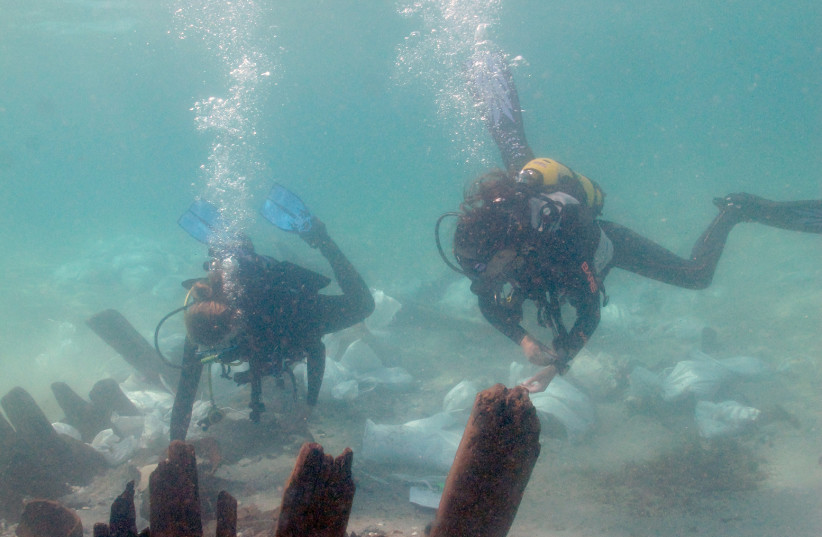
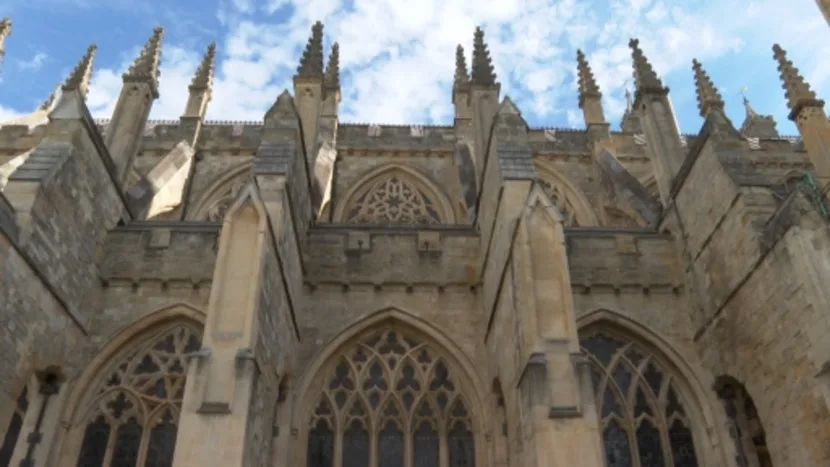


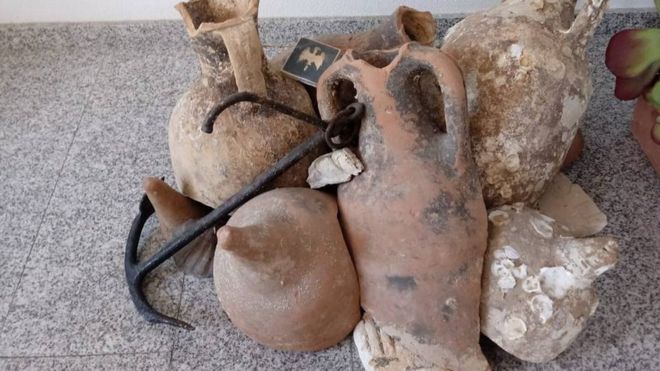
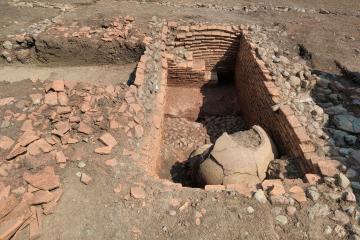


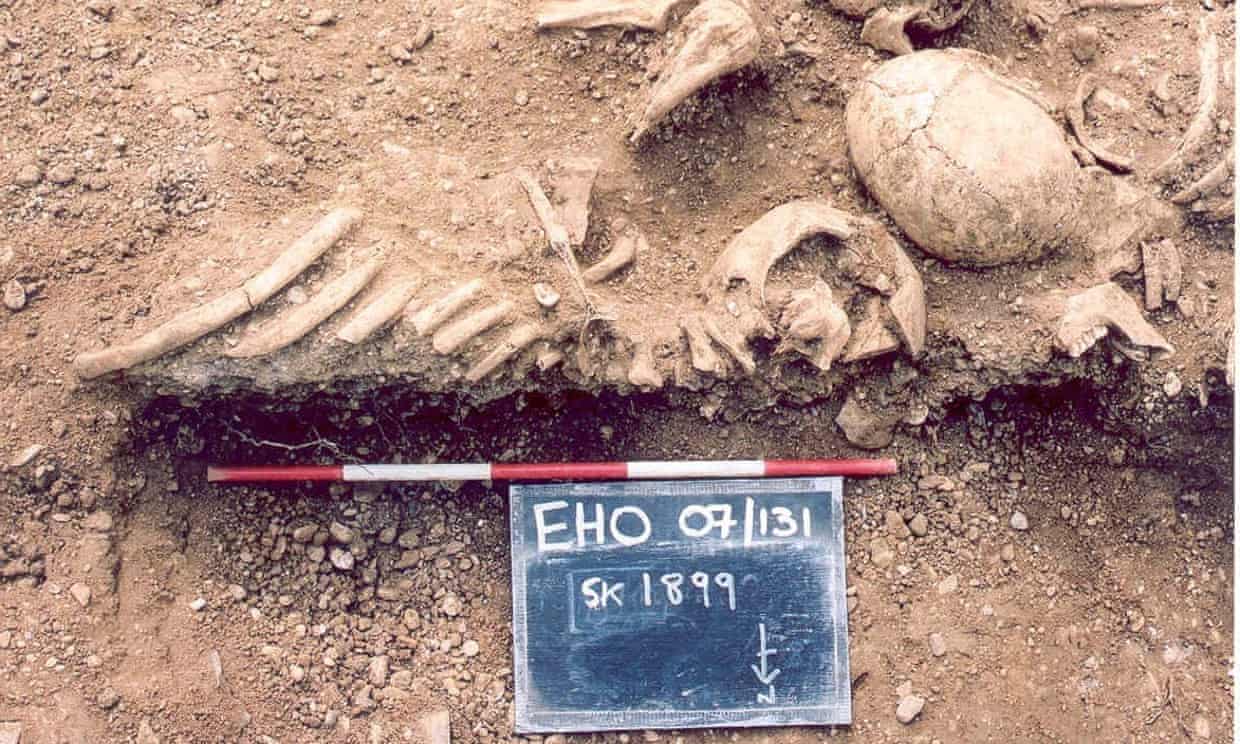


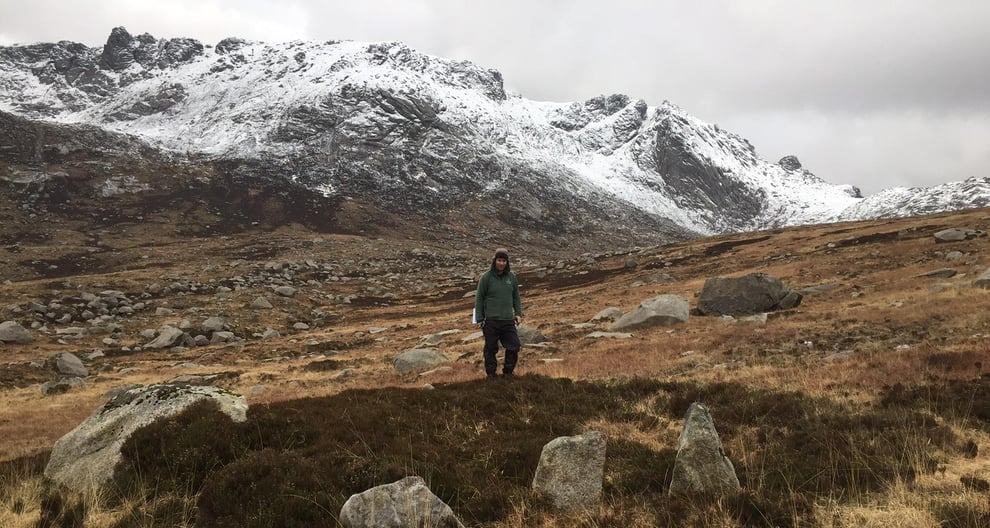


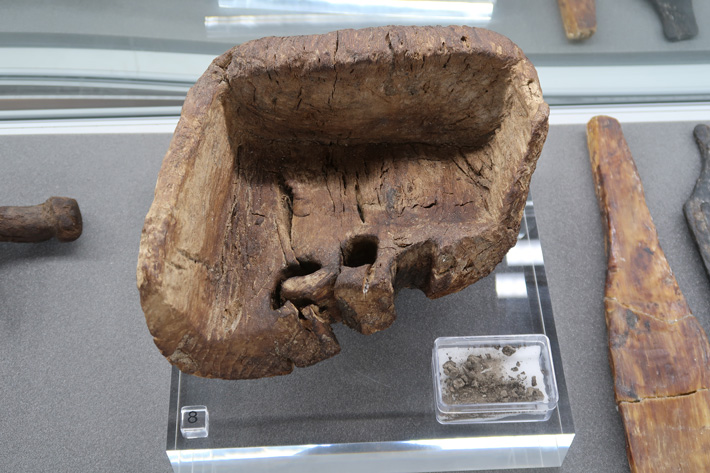
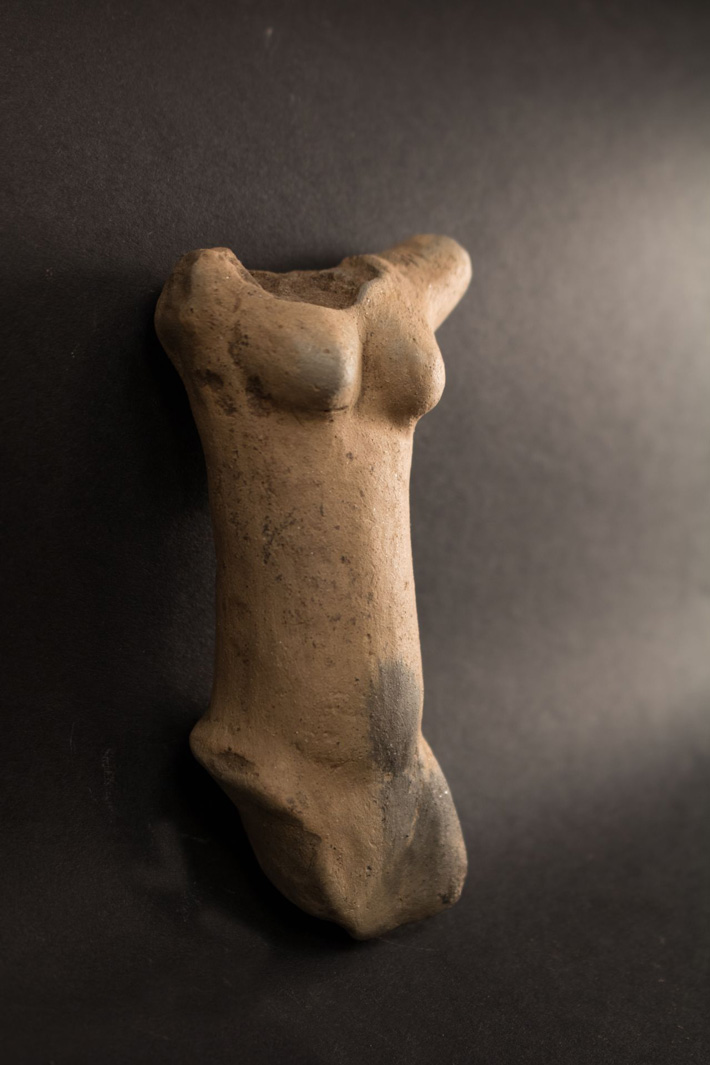
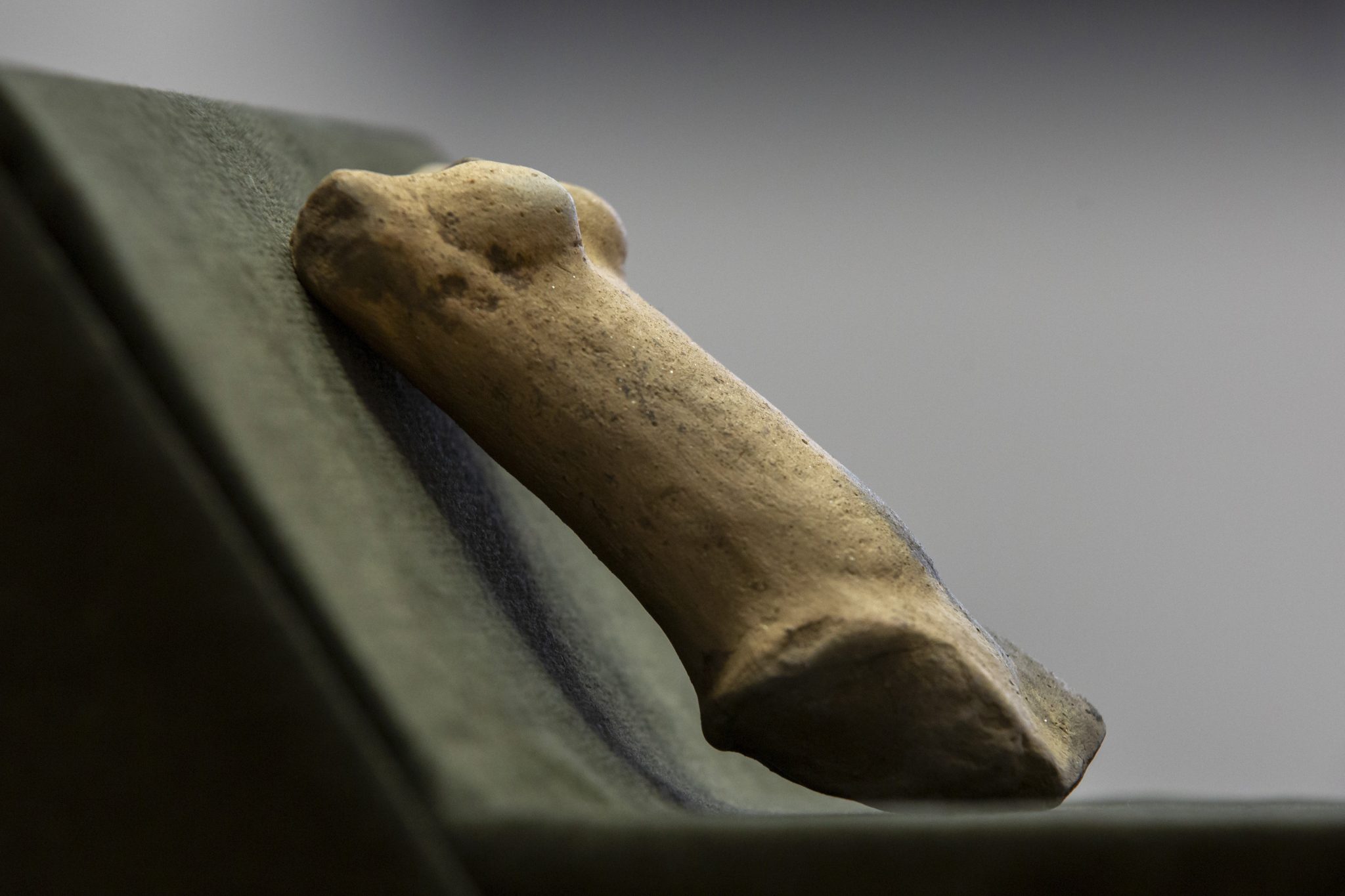

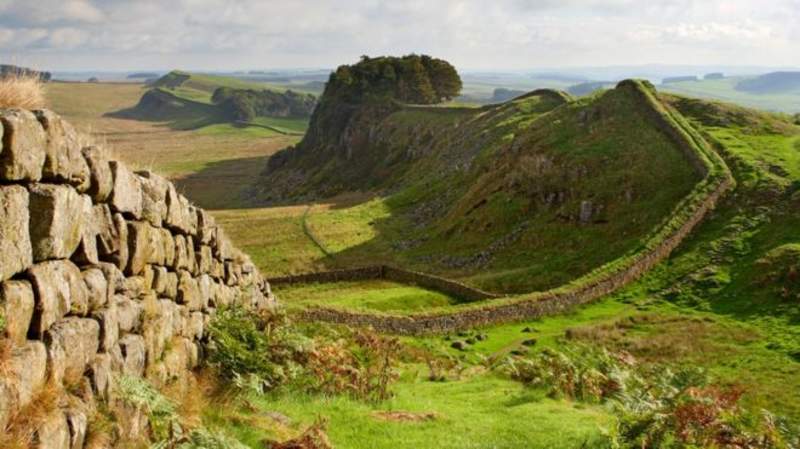



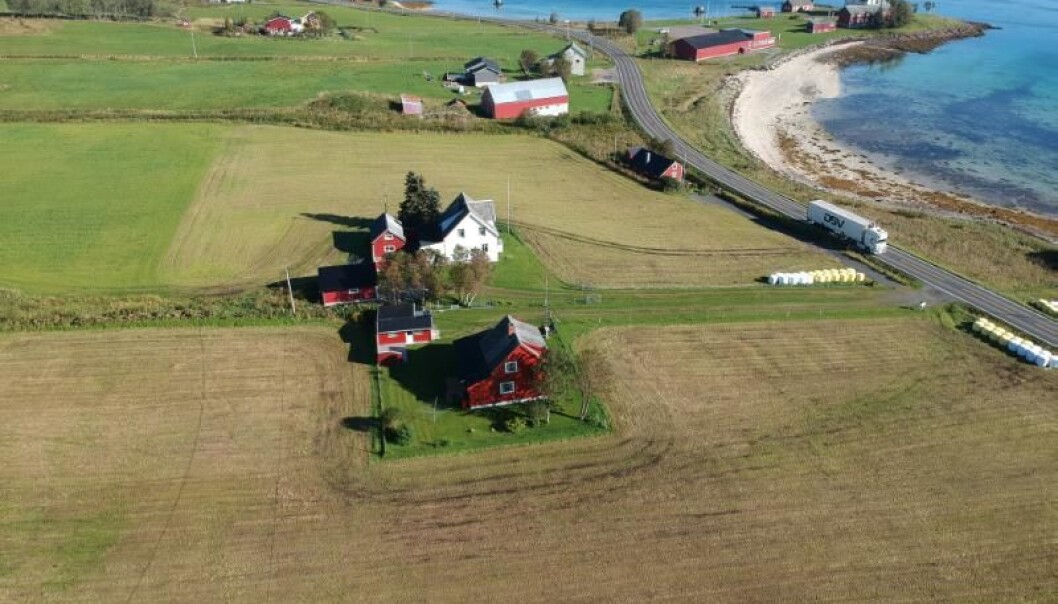

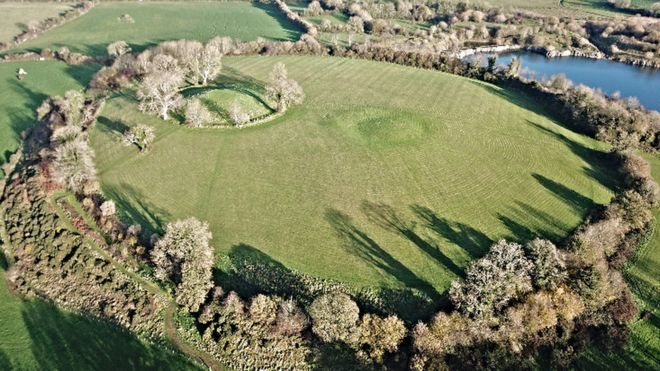

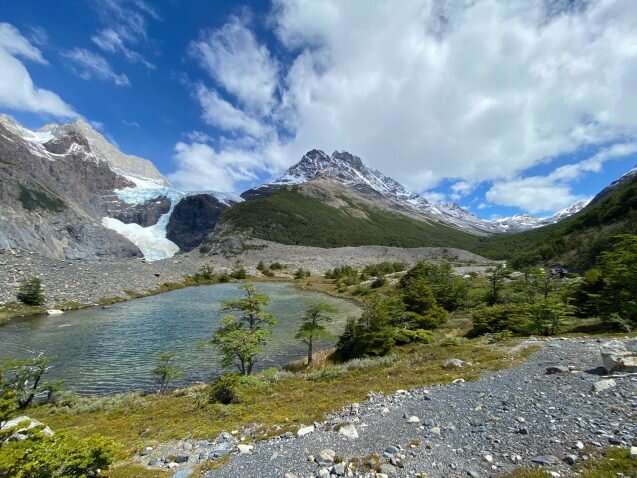
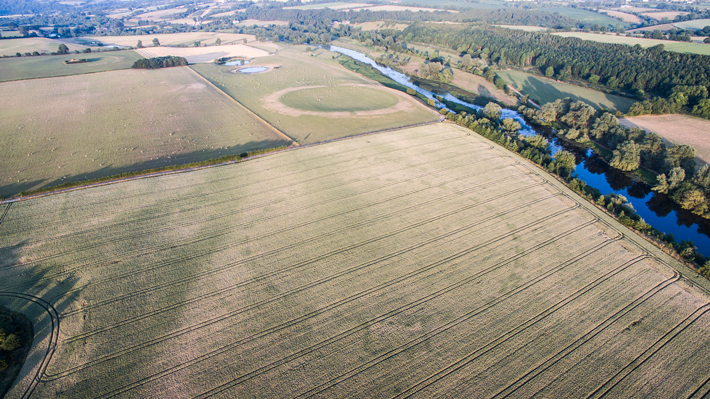

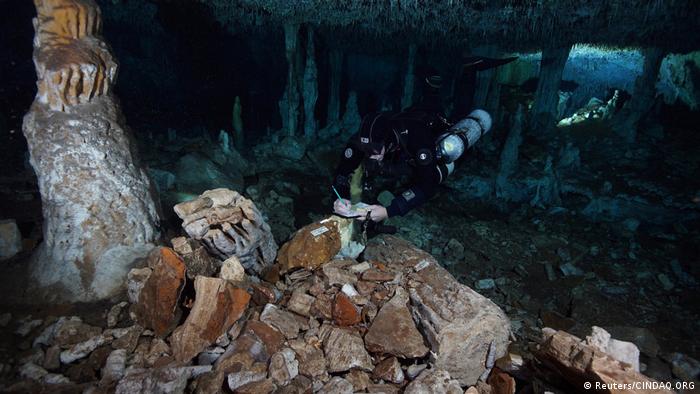

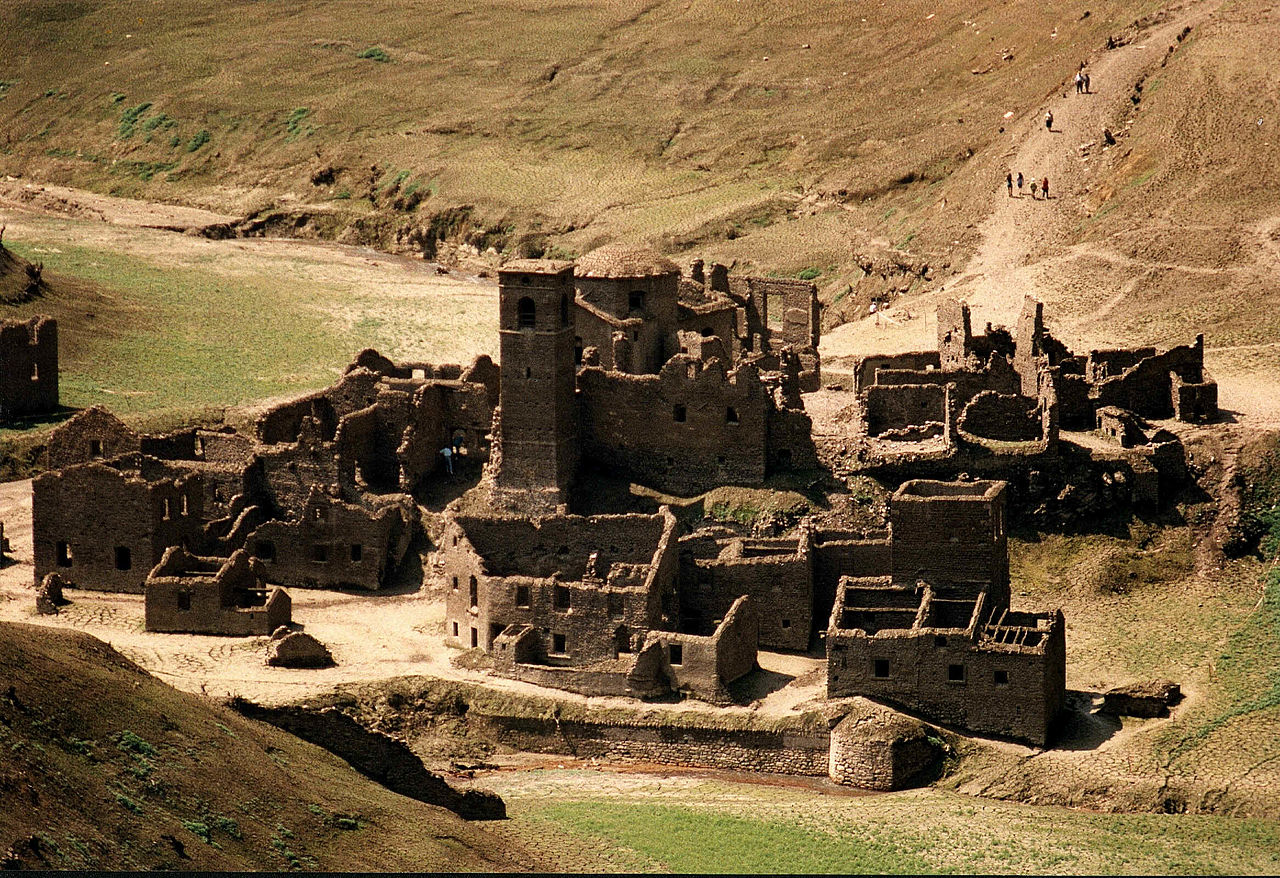


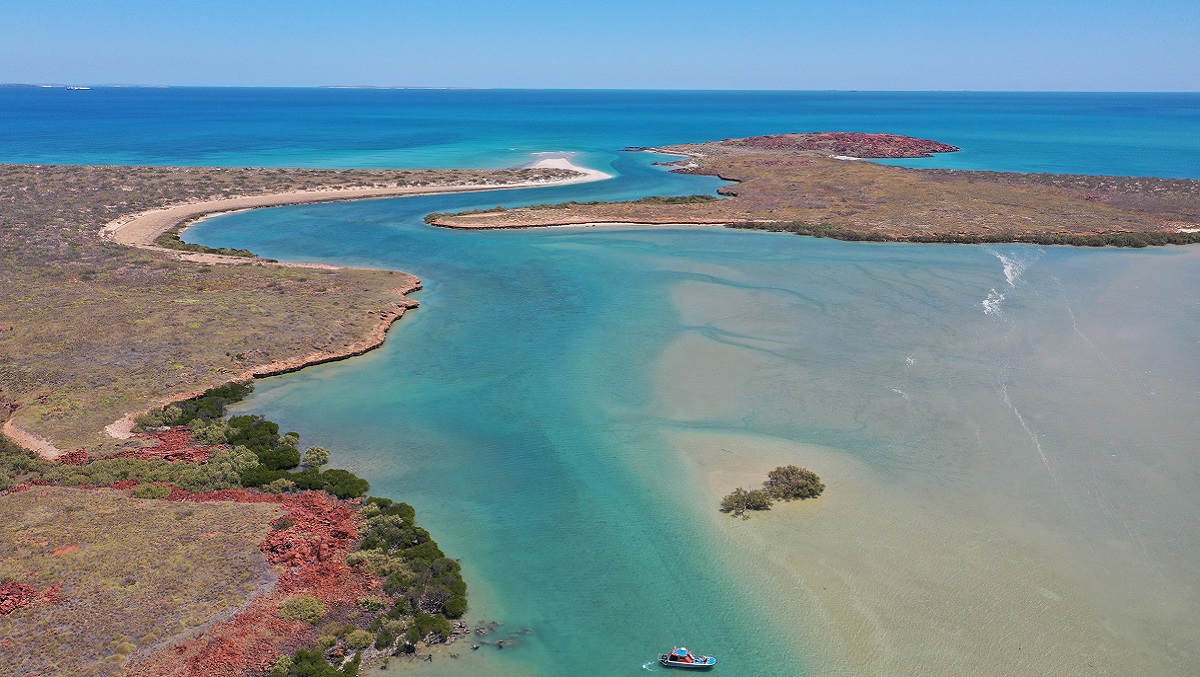
:max_bytes(150000):strip_icc():format(webp)/__opt__aboutcom__coeus__resources__content_migration__mnn__images__2018__10__pompeii-graffitti-8e4ff713434546c39297c70ce6325c77.png)

